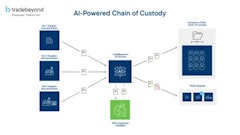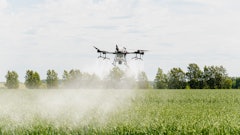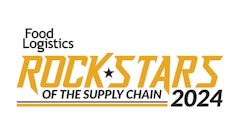
Establishing and sustaining a robust food safety culture is paramount, with positive implications for consumer health, regulatory adherence, and brand credibility. Yet, despite advancements in knowledge and technology, the prevalence of foodborne illnesses remains alarming, affecting 48 million individuals annually, with one in six Americans falling ill each year. Surprisingly, a mere 49% of companies have formalized plans for a food safety culture, highlighting the pressing need for improvement within the foodservice industry. The industry needs to do more to safeguard public health and enhance overall operational standards.
Food businesses must maintain and prioritize positive food safety cultures. This effort is essential to uphold the safety, quality, and integrity of foods as they journey across the supply chain, from farm to processing, manufacturing, storage, distribution, and retail. The shift from conventional practices to modern food safety approaches is not just a trend but a critical step in safeguarding consumer health, adhering to industry regulations, and protecting brand reputation.
Organizations across the supply chain must build and maintain strong food safety cultures by elevating their food safety standards, reducing chemical dependency, harnessing advanced technologies, embracing sustainability, and fostering strong leadership. To accomplish this, they should:
· Prioritize ongoing training. Food safety training is at the heart of promoting a culture of safety and compliance across the supply chain. This training should go beyond merely outlining protocols. Equipping employees with comprehensive knowledge and understanding of food safety practices is crucial to upholding impeccable hygiene and quality standards to avoid potential risks. This knowledge empowers employees to make informed decisions, ensuring food safety and compliance during every step of the supply chain.
· Explain the why. Explaining the reasons behind food safety protocols is vital. Explanations should delve into the rationale behind these practices, outlining the potential consequences of non-compliance, such as sickening consumers, product recalls, legal issues around regulatory violations, product liability, contractual obligations, supply chain disruption, food safety litigation, and damage to brand reputation. Understanding the rationale behind these practices helps employees grasp the importance and significance of each protocol, fostering a heightened sense of responsibility and compliance with safety measures. By increasing risk awareness and empowering teams, employees can proactively identify and address potential safety hazards, minimizing risks of contamination or spoilage. By explaining the "whys" behind food safety protocols, organizations can cultivate a culture of transparency, accountability, and collective commitment to upholding stringent food safety standards.
· Rely on technology. Advanced technologies are revolutionizing food safety practices. These tools, such as temperature monitoring systems, real-time tracking mechanisms, and automated alert systems, are essential components that ensure perishable goods are handled and transported under optimal conditions. By harnessing the power of technology, food businesses can enhance transparency, precision, and traceability, thereby significantly mitigating the risks of foodborne illnesses and contamination. This is a promising step towards a safer, more efficient supply chain.
· Use the right sanitizers and disinfectants. Safe sanitizers and disinfectants form the bedrock of hygiene standards across the supply chain, but not all products are created equal. Prioritizing EPA-approved, food-safe solutions, such as Hypochlorous acid (HOCL), presents a game-changing opportunity to eradicate pathogens while preserving environmental sustainability and safeguarding human health. HOCL is a highly effective disinfectant that’s safe for humans, foods, and the environment, making it a logical choice for the food and beverage industry. HOCL can uniquely eliminate 99.9% of pathogens, including Salmonella and listeria, which can cause foodborne illnesses and even deaths, as well as financial, legal, and reputational damage for food businesses.
· Prolong the shelf life of foods. Additionally, using HOCL as a no-rinse sanitizer for produce, meat, poultry, and seafood prolongs the shelf- life of these perishable food items by effectively reducing bacteria and pathogens present on their surfaces. By effectively eliminating pathogens and contaminants, HOCL helps enhance the safety of perishable goods and extend their shelf life. The antimicrobial properties of HOCL help maintain the freshness and quality of fruits, vegetables, meat, poultry, and seafood by reducing the risk of spoilage and decay. HOCL helps enhance the safety and longevity of the products, minimizing waste and associated costs, improving sustainability, and boosting food safety.
· Lead by example. Leading by example is the cornerstone of instilling a food safety culture in any food business. Leadership’s unwavering commitment, visible support, and active participation in implementing food safety protocols establishes a gold standard for the organization. By embodying a dedication to food safety from the top of the organization downwards, employees at all levels of the company will be inspired to prioritize safety, adhere to strict protocols, and perpetuate a culture of safety and quality.
· Reward high performers. Acknowledging and rewarding your employees for their steadfast commitment to food safety is not just a formality; it's a crucial step in fortifying a culture of excellence. Recognizing, praising, and incentivizing employees who consistently uphold best practices and comply with safety protocols fosters a sense of ownership and accountability among team members. This motivates employees and inspires a positive, proactive food safety culture across the organization. Praise employees in staff meetings, spotlight an employee of the month, showcase high performers on your social media platforms, give small gifts and/or financial bonuses. This is an effective way of showing appreciation for employees’ efforts, motivating your team, and encouraging staff members to continue their excellent work.
· Allocate proper resources to food safety efforts. Ensure that employees have the proper tools and resources necessary to elevate food safety efforts. That means providing well-functioning equipment (like properly working walk-ins, freezers, etc.), tech tools to optimize operations, properly calibrated food thermometers, sanitizers that effectively eliminate pathogens, ongoing training and education, digital checklists for inspections, and anything else they need to operate safely and ensure high quality foods.
Establishing a robust food safety culture is an essential way to uphold the safety and quality of products across the supply chain. By embracing progressive, forward-thinking, and sustainable practices, accentuating training, leveraging cutting-edge technology, harnessing safe sanitization methods, having leadership model exceptional behavior, and rewarding high performers, your organization will be well on your way to a strong, positive food safety culture. This effort will go a long way in maximizing food safety, mitigating risks, and ensuring consumer health, confidence, and trust in your brand. Make an unwavering commitment to a food safety culture to create a strong, safe, resilient brand.


























